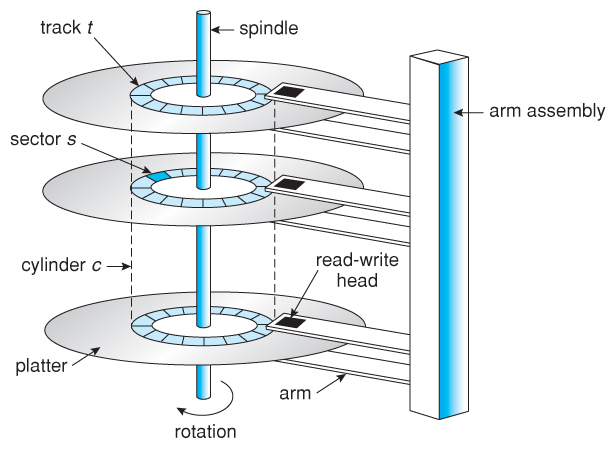DISK STRUCTURE

- Disks consist of stacked platters;
- Each platter with two heads (top and bottom) for reading and writing data;
- Platters are divided into tracks, which are further divided into sectors;
- Sectors typically have a standard size, often 512 bytes, determined by the file format;
- Tracks stacked across multiple disks form a cylinder;
Addressing Schemes
Disk data is accessed using two primary addressing schemes:
Cylinder-Head-Sector (CHS):
- Historically used and still relevant for certain legacy systems;
- Specifies the cylinder, head, and sector of data;
- Aids in locating data on a physical disk;
- Useful for partitioning and older devices like floppy disks;
Logical Block Addressing (LBA):
- Utilizes a linear addressing scheme for modern disks, including SSDs and network drives;
- Blocks are indexed numerically, starting from zero;
- Offers easier abstraction and compatibility across different disk types;
Converting CHS and LBA
The following formulas can be used to convert between CHS and LBA:
CHS to LBA:
LBA = (C * TH * TS) + (H * TS) + (S - 1);C- Cylinder,H- Head,S- Sector,TH- Total Heads,TS- Total Sectors;
LBA to CHS:
T=(LBA / Sectors per Track);S=(LBA % Sectors per Track) +1;H=(T % Number of Heads);C=(T / Number of Heads);
Practical Application
- Understanding both addressing schemes is crucial for interacting with disk data through system calls and interrupts;
- Converting between
CHSandLBAenables compatibility and efficient data access across different systems and storage devices;